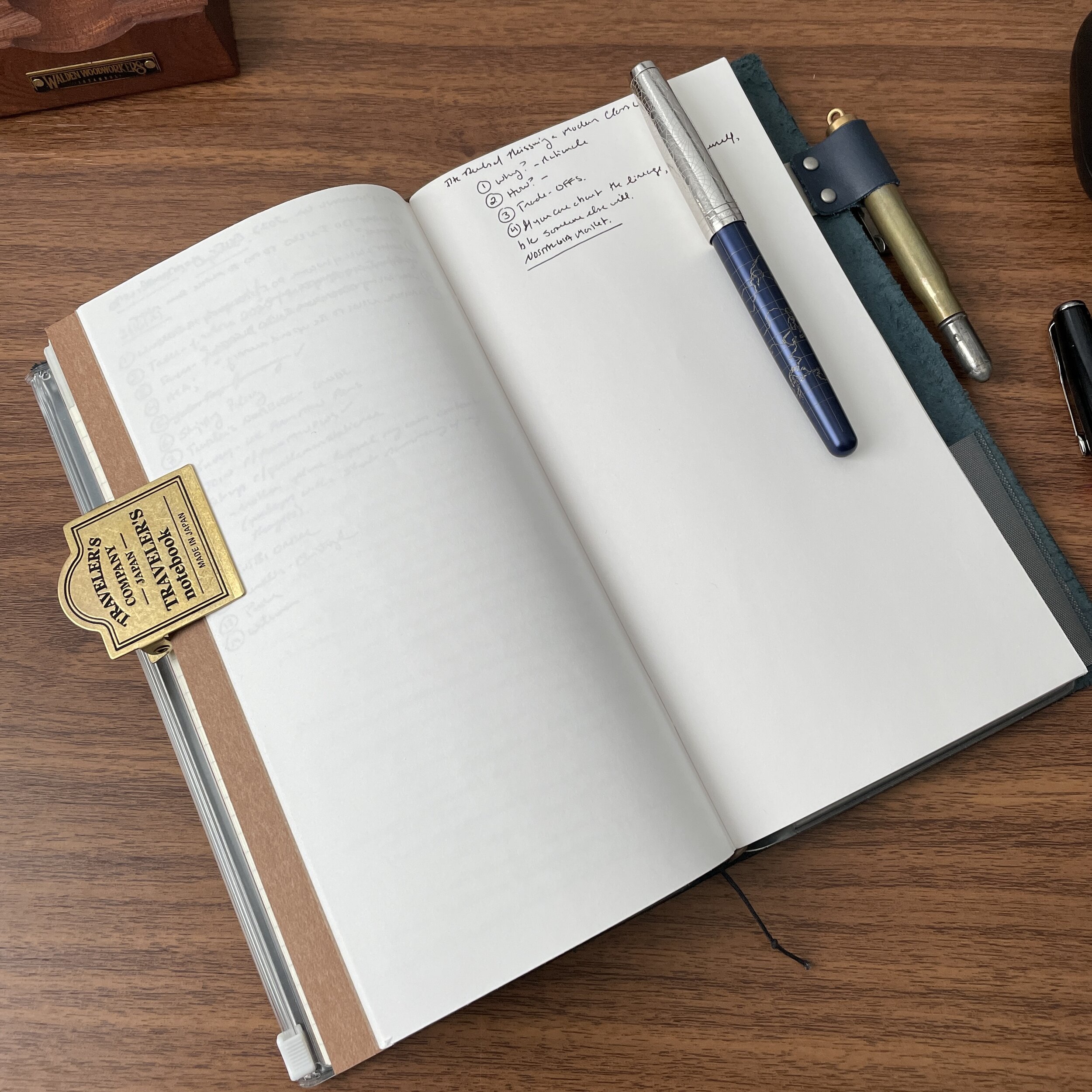Today we have a Guest Post from a friend of the blog, R.B. Lemberg! It’s been a long while since T.G.S. has featured a guest post, and I’ve been looking to bring in some new voices and hope to make this a semi-regular event. Enjoy!
In The Cultures of Collecting, editors Elsner and Cardinal describe the biblical Noah as the first collector. “Adam had given names to the animals, but it fell to Noah to collect them… Menaced by a Flood, one has to act swiftly. Anything overlooked will be lost forever: between including and excluding there can be no half- measures. The collection is the unique bastion against the deluge of time.” (Elsner and Cardinal 1994:1)
It took a global crisis to make me a collector of pens.
In 2020, shuttered in my room and yet overloaded with responsibilities of teaching, leadership, caregiving, and generative work, I stepped into the world of fountain pens for respite. It wasn’t my first pen venture; I learned about writing with dip pens and fountain pens in Soviet elementary school. I was a clumsy child and the pens were of poor quality; I hated every moment of it. Later, in graduate school in the US, I happily used a single Pilot Falcon. I put it aside after getting my doctorate, and switched to Pilot V5s; but something shifted during the pandemic. I think this describes many people.
Edison Menlo (top) and Kaweco Liliput (bottom).
I remember 2020 and 2021 as joyful years for pens. Everything else was ash and fear, but pens were a happy creative outlet, and many new people joined the hobby. I certainly did not think about myself as a stationery collector before the pandemic, but I found myself reading fountain pen books and blogs and watching instructional videos. In a quest after that special magic of a perfectly tuned nib touching paper, I tried a whole lot of pens. I sent a few pens to Mark Bacas for a grind. I talked about fountain pens endlessly. By the end of 2021, I figured out what I liked, and began curating.
I wasn’t collecting pens to save them from the deluge of time, and these days I’m not sure if I am a collector at all. I like to use my pens, but I also enjoy simply lining them up; I live for an aesthetically pleasing pen tray. There’s certainly a central theme to my collecting. I love Italian pens. I gravitate towards stubs and italic nibs, as well as the sometimes-maligned European mediums. The colors and textures of pens in my tray reassure me that beauty persists beyond the devastation of wars and pandemics, beyond market pressures and too-rapid technological advances. Fiddling with my pens reminds me that history is a human story. We value not just what’s the latest and fastest and flashiest; my pens promise and deliver a contemplative world.
As a curator, I am infinitely curious about other people’s practices. Over the last three years, I read blogs and talked to folks online and offline about managing fountain pen collections. Some never give anything up – once the pen enters a collection, it is there to stay, whether used frequently or not. In the story of the flood, only a single raven (and later: a single dove) ever left the Ark. Others rotate through pens, frequently buying and selling; a prime example of this approach is the fascinating UK Fountain Pens blog. Many people are somewhere in the middle - they keep most or many of their pens, and let some go. Some folks call their pens a collection, others an accumulation. I call mine the gathering. Sometimes I think my pens are alive – not just items on display, but friends who hang out with me, and help me get words down on page in a way that nurtures my soul.
Sometimes, pens leave the gathering. They’ve had enough of my party. :) Others are here to stay.
Today’s Highlights
Onoto Scholar in Mandarin Yellow. I got this one from Onoto directly for a great introductory price in early 2022; the nib in it right now is a special order stub, I believe ground for Onoto by John Sorowka.
Leonardo Momento Magico in Brooks Bohemian Twilight. This one was a birthday present from Limited Pens Korea. I swapped the steel Medium it arrived with for the excellent Franklin Christoph M Sig – one of the best nib grinds I’ve tried so far (thank you, Audrey!) It is an incredibly versatile and joyful pen – I love the ink window and the fact that the nib unit unscrews for cleaning, making it excellent for shimmers.
Aurora Optima Viola with a Factory Stub. I got it for an amazing price on Fountain Pen Day. This also was subsidized by birthday moneys. I wanted to try an Aurora, and this one is superb and easily one of my favorite pens ever.
What are some of your fountain pen standouts? Do you curate, and if so, what is your approach?
R.B. Lemberg (they/them) is a queer, neurodivergent academic and writer of speculative fiction. They are the author of The Unbalancing (2022), The Four Profound Weaves (2020), and other books. You can find them on their website http://rblemberg.net, on their Instagram as @rblemberg, and on Patreon at https://www.patreon.com/rblemberg

